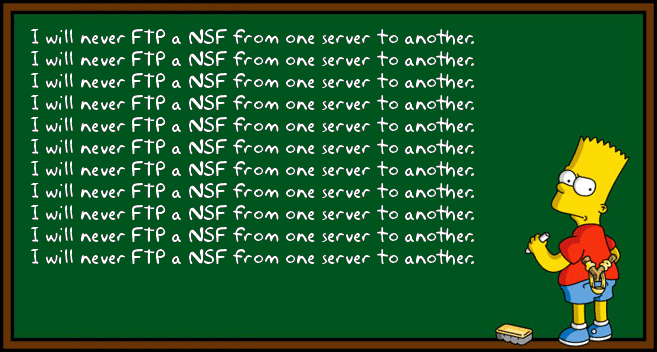Moving a NSF from one server to another

And no copying with Explorer or SSH either. Moving from one server to another is called replication. If it doesn't work as you expected you have a problem at hand that you need to fix that moment or it will bite you soon enough! (Picture courtesy of Bart Simpson Generator)
Posted by Stephan H Wissel on 26 October 2011 | Comments (d) | categories: IBM Notes Lotus Notes